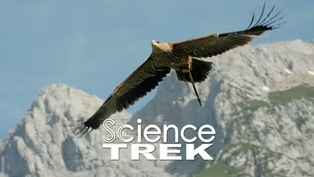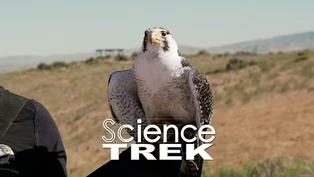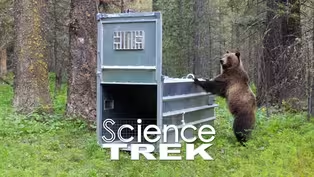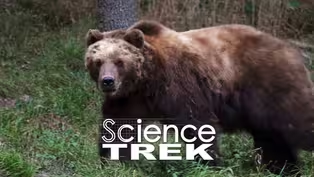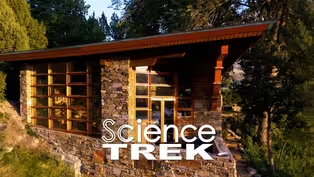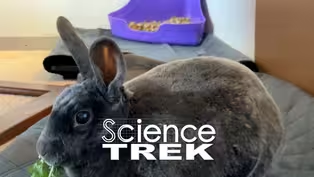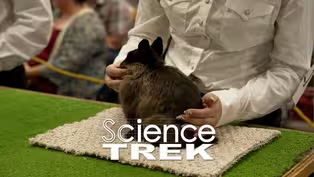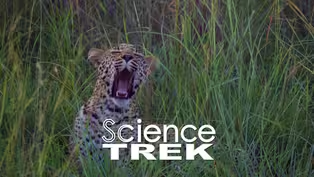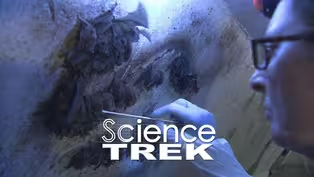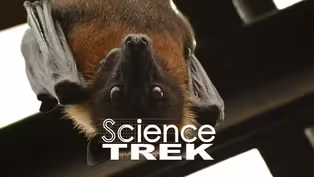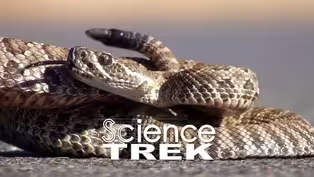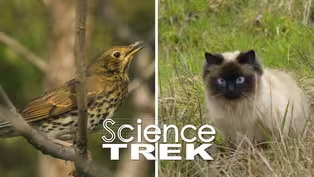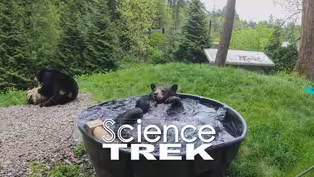
Urban Wildlife: An Urban Wildlife Tour
Special | 6m 17sVideo has Closed Captions
Tour the Boise Greenbelt looking for Urban Wildlife.
Everyone should spend time in Nature. It’s healthy and you can learn a lot. But you don’t have to travel far to find a natural setting. Most urban environments have kept a piece of the wild. Take a tour of one small section of Boise’s Greenbelt with conservationist Steve Burns and see what urban wildlife you can find.
Problems playing video? | Closed Captioning Feedback
Problems playing video? | Closed Captioning Feedback
Science Trek is a local public television program presented by IdahoPTV
Major Funding by the Laura Moore Cunningham Foundation and the Idaho National Laboratory. Additional Funding by Sparklight, the Friends of Idaho Public Television and the Corporation for Public Broadcasting.

Urban Wildlife: An Urban Wildlife Tour
Special | 6m 17sVideo has Closed Captions
Everyone should spend time in Nature. It’s healthy and you can learn a lot. But you don’t have to travel far to find a natural setting. Most urban environments have kept a piece of the wild. Take a tour of one small section of Boise’s Greenbelt with conservationist Steve Burns and see what urban wildlife you can find.
Problems playing video? | Closed Captioning Feedback
How to Watch Science Trek
Science Trek is available to stream on pbs.org and the free PBS App, available on iPhone, Apple TV, Android TV, Android smartphones, Amazon Fire TV, Amazon Fire Tablet, Roku, Samsung Smart TV, and Vizio.
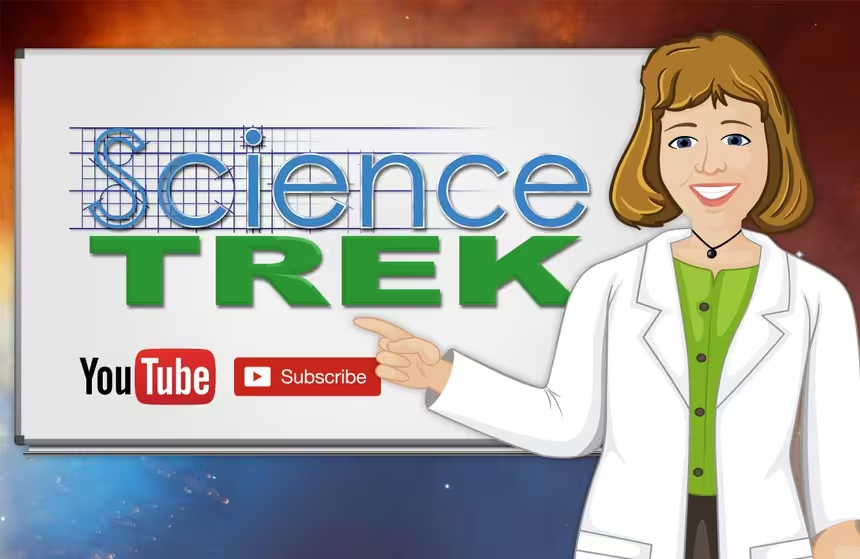
Science Trek
Science Trek is a place where parents, kids, and educators can watch short, educational videos on a variety of science topics. Every Monday Science Trek releases a new video that introduces children to math, science, technology, engineering, and math (STEM) career potentials in a fun, informative way.More from This Collection
Every animal in an ecosystem plays an important role in the well-being of our planet. Some are predators. Some are prey. Some pollinate plants or spread seeds. Each contributes to its part of the community and land around it. Take time to learn more about the lives of animals.
Video has Closed Captions
What special skills do birds of prey have that make them such good hunters? (6m 52s)
Birds of Prey: World Center for Birds of Prey
Video has Closed Captions
Visit the World Center for Birds of Prey. (6m 8s)
Video has Closed Captions
Learn what bears like to eat and why you should avoid them. (6m 49s)
Bears: Grizzly, the Bear in a Coat
Video has Closed Captions
How are grizzly bears different from other bears? (5m 33s)
Video has Closed Captions
Architects borrow from nature all the time. Find out how. (6m 26s)
Rabbits: Are You Rabbit Ready?
Video has Closed Captions
What do you need to know before getting a rabbit for a pet. (5m 57s)
Video has Closed Captions
Showing rabbits at your local fair opens the door to science. (6m 30s)
Video has Closed Captions
What is White Nose Syndrome and why is it so deadly? (5m 15s)
Video has Closed Captions
How do bats find their food at night? (4m 17s)
Video has Closed Captions
Why do snakes always look like they are staring? (3m 43s)
Providing Support for PBS.org
Learn Moreabout PBS online sponsorshipJoan Cartan-Hansen, Host: Urban wildlife can really add something special to a community.
Come join me on a tour along my town's greenbelt and see for yourself.
[MUSIC] Cartan-Hansen: Steve Burns is a conservationist.
His work with zoos and wild life parks is saving animals throughout the world.
But Steve likes to remind people that you don't have go very far to find wildlife.
It's right in your own neighborhood.
Today, he's showing us what can be found in one small section of south east Boise.
Steve Burns, Conservationist: So we're walking up here.
There's the Boise Greenbelt right there.
It can't be more than 30 or 40 feet away.
And this is a beaver dam.
Beavers don't really just build one dam.
They build a whole series and they end up creating this big complex, this big network of wetlands that they live in.
And it's not just that the beavers live here, but when they create this wetland, this would normally be a little stream that was just two feet wide.
They've created this whole pond area.
And it means that all these other species of animals and plants get to live here as well.
So what exactly is a beaver?
A beaver is a rodent.
It's the second biggest rodent in the world.
A mark of a rodent is that their teeth are constantly growing and the beaver's teeth constantly grow.
And then you look and you go, man, that beaver never brushes its teeth.
They're orange teeth.
They're actually orange because they have iron in them because they chew and chew and chew on wood all day long.
And if they didn't have that iron, they wouldn't have the strength to actually get through the wood.
Cartan-Hansen: Then we walk through an underpass, a perfect place to spot another kind of urban wildlife.
Burns: Right there, that is just awesome.
That is a orb Weaver spider.
It's a native species, but this is perfect habitat for them.
And you know, you got all kinds of little insects and because you've got this wetland right here, courtesy of our friend, the beaver, you've got all these insects.
And so, all those insects then lead to other things.
One of the first things is, is you've got spiders.
It also leads to all kinds of birds.
Cartan-Hansen: And that's what we go looking for next.
Burns: When you have water, it allows for a much greater number of insects.
And when you have a bunch of insects, it attracts all kinds of other creatures, frogs being one of them.
But the other is swallows.
And so swallows because we have all of these wetlands here underneath the bridge, you just have hundreds and hundreds of swallow nests that they've built.
Cartan-Hansen: Heading back past the beaver dam, Steve notes the plants we see.
67 percent of them have been introduced to Idaho, crowding out native plants.
Burns: But I've never been that much of a much of a plant guy, and I've always wondered, you know, what am I looking at?
So, there's an app, uh, that was developed by the California academy of sciences.
Um, a whole program called I naturalist, and you can download it.
It's a free app onto your phone.
And then they have another app called seek, which you use to find the local, this stuff in your, your, your own, uh, locality.
So when you have this app, you just go up to the, to something and you take a picture of it and it'll tell you that, oh, this is a Cottonwood.
The other cool thing about it is that they're using that data to create a huge database of where species are found.
So, you're actually doing some scientific work.
You're not just finding the species, but you're contributing to this much larger conservation project that they're in the process of putting together.
When you're out and exploring, I encourage you to go out and explore.
It's great to be out there.
There are a few things you want to look out for.
This is one of them.
If you're familiar with this plant, this is poison Ivy, and you definitely want to stay away from that.
Cartan-Hansen: We head into the Golda Harris nature reserve.
Burns: One of the things that I always encourage people to do, and I encourage kids to do is if you want to get out and you want to explore nature, there's two things.
Find a place that you really like and go there often, because as you go there, often you'll start to see things change.
And then the other thing is just sit, just sit for a while, sit for half an hour, if you can, or 20 minutes or 30 minutes, and just look around because when you're moving, sometimes you're scaring creatures off, but when you just sit for a while and you're quiet, you're not making any noise.
You're not moving around.
Suddenly nature starts to come in around you.
And you're going to start to see things that you probably wouldn't see if you were riding by, on your bike or even walking by.
Cartan-Hansen: And that's what's so special about of urban wildlife.
Take the time to notice and an interesting world opens up.
Burns: Having nature nearby it's, it's not, it's not just a luxury to me.
It's a necessity.
It's something that we should all have.
And hopefully that as we design our cities, because Idaho's a growing state, there's many of our communities are growing.
Hopefully as we grow them, we've made sure that there's still parts of that community that are there for nature.
I realize we need houses.
We need roads.
We need all that stuff, but we need nature.
And when you have it close by, it is not only good for the animals and the plants that are living there.
It's good for us.
Cartan-Hansen: If you want to learn more about urban wildlife, check out the science trek website.
You'll find it at science trek dot org.
[MUSIC] ANNOUNCER: Presentation of Science Trek on Idaho Public Television is made possible through the generous support of the Laura Moore Cunningham Foundation, committed to fulfilling the Moore and Bettis family legacy of building the great state of Idaho.
By the Idaho National Laboratory, mentoring talent and finding solutions for energy and security challenges, by The Friends of Idaho Public Television and by the Corporation for Public Broadcasting.
Urban Wildlife: Birds and Cats Don't Mix
Video has Closed Captions
Clip: Special | 1m 4s | Cats and birds don’t mix. Why? (1m 4s)
Urban Wildlife: How To Protect Your Space
Video has Closed Captions
Clip: Special | 1m 4s | Don’t want Urban Wildlife messing up your backyard. What can you do to protect your space? (1m 4s)
Providing Support for PBS.org
Learn Moreabout PBS online sponsorship
- Science and Nature

Explore scientific discoveries on television's most acclaimed science documentary series.

- Science and Nature

Capturing the splendor of the natural world, from the African plains to the Antarctic ice.












Support for PBS provided by:
Science Trek is a local public television program presented by IdahoPTV
Major Funding by the Laura Moore Cunningham Foundation and the Idaho National Laboratory. Additional Funding by Sparklight, the Friends of Idaho Public Television and the Corporation for Public Broadcasting.
